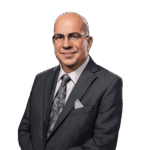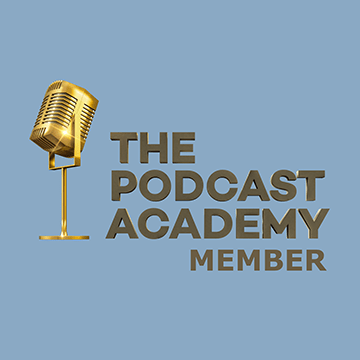Transcript
The Project Management Institute (PMI) defines project management as “…the use of specific knowledge, skills, tools and techniques to deliver something of value to people.”
This is the Business Infrastructure podcast – the show where we offer strategies, tactics, and resources to cure back-office blues and to keep your business operating as good on the inside as it looks on the outside. I’m Alicia Butler Pierre and I’ll be your guide as we learn from the queen of project management and how she managed the implementation of a new technology for the largest jail south of the Mississippi River.

This episode is brought to you by Equilibria, Inc. the company behind this podcast where we design scale-ready business infrastructure for fast-growing small businesses.
Cheryl Taylor is the co-founder of TPM Services, a project management consultancy. She’s also currently a Vice-President at CommonSpirit Health. It’s been said that the most effective leaders are those who are willing to try new things and can accomplish big goals through others. And as you’ll soon discover, Cheryl is the embodiment of an effective leader.
This is Ep. 220: Change is Coming – Cheryl Taylor Describes How She Managed a Large Jail Technology Upgrade
I’m Cheryl Taylor. I was born in Birmingham, Alabama. My career actually started with BellSouth and I worked in BellSouth for many years, but one day at lunch break, a friend asked me if I would go with her to a job fair. And I said, “Sure!”
And we put on our walking shoes and walked, maybe two blocks from 675 West Peachtree down the street to the job fair. And I thought, “Gosh, this is so interesting”. I think I’ll just participate. I had no plans of looking for a new job. I liked the job that I was currently doing. And I went to the PWC job booth and there shared my work experience, what I was doing at BellSouth at the time, and received the job offer. Before I could get back to my office, they were calling me, offering me a job. And I thought, “Oh my gosh, this is so exciting!”
BellSouth was a large telecommunications company headquartered in Atlanta, GA, the city in the southeastern part of the U.S. where Cheryl and her friend went to that career fair.

So, I went in and shared with my director. At the time I was a senior manager that had an offer from PriceWaterhouse Coopers. And I was just curious if they get matched the offer. It was a good increase in pay. And they said, “No, sorry, we can’t actually offer, but this is what we can do. We had a sabbatical program at the time that allowed employees to take up to a two-year sabbatical. And if you didn’t like what you were doing after two years, you could come back into your same level of position.”
This sounds too good to be true. But then again this was back in the 90s, on the tail end of a time where employees could, and often did, spend an entire career at one company. and Cheryl had an important decision to make. Should she do it? Either way, she couldn’t lose.
So, I took the two-year sabbatical. But I never came back.
At PWC They had just won a larger award for Prime America insurance company. And they were reengineering and transforming their financials. I was a senior project manager on the financials implementation. It was a very exciting time.
An exciting time for several reasons…this was also around the time that golf legend Tiger Woods played his first tournament in Atlanta.
I was so anxious to see Tiger Woods, but on the way to seeing him, I ran into friends, and they were starting a new business and they were looking for a project director and I said, “Oh gosh, I could do that job!”
I just started with PricewaterhouseCoopers. I really liked my job. And they said, “Oh, well, why don’t you just send us an offer?” So, I wrote an offer. That I’m sure they’ll refuse, but they did not refuse. They accepted the offer. So, I found myself with another offer I thought, “Oh gosh, this is going to be a fun journey!” So, I resigned from PricewaterhouseCoopers and I went to work for a startup. They had just won a large award to do implementation for the City of Atlanta to replace their human resource and payroll systems with PeopleSoft, which was new technology at the time.
This massive effort to replace a technology would not only test Cheryl’s resolve as a project manager but would also lay the groundwork for future technology upgrade projects within local government.
It was a grueling implementation. We had to scale everything. It was a small scale, but it was a big scale. I was working there completing that particular project when received a call from a recruiter and they were looking for a project manager that had PeopleSoft experience and the friend referred them to me. And then I received an offer at the end of that 12-month implementation to go work for AGL Resources. So that was my migration from telephony to consulting, to consulting, and then to energy.
By being open-minded and saying “yes” to opportunities to sharpen her project management saw, Cheryl successfully transitioned from a large corporation to a Big 4 consulting firm, on to a startup with a government contract, and then back to a large corporation.
I worked for AGL resources for six years, from 2000 to 2006. And it was during that period of time that I co-founded TPM Services with my business partner.
And it was around this time that I first met Cheryl. I remember it so well. She invited me into her home for a meeting. I was struck by the beauty of her home, her warm personality, and our engaging conversation. Turns out, we were both in the process of securing certifications for our businesses. In the U.S., women, veteran, and minority owned businesses can undergo a rigorous certification process to increase their chances of securing large government and corporate contracts.

So, the journey on certifications was interesting. I became a certified project manager in 2006, but I received my master’s degree in project management in 1993. So, I’ve been working as a project manager for quite a while, just had not finalized that credential, but more so the credential that the company required for some of the larger contracts was just being a certified minority-owned business, and even though the work success was there. And the work experience was there.
There’s still are series of certifications for small-owned businesses to compete in conjunction with large-owned businesses. And one of the entry points is the formal certification that you are a minority-owned business. Yet I found that most of the work that I did, I was able to procure for TPM Services. I didn’t need that certification for most of the work that we procured.
In other words, by the time Cheryl started TPM Services, she already had impressive relationships with different leaders and influencers. The breadth and depth of her experience coupled with the size of projects she’s successfully managed meant her business didn’t need certifications to get into the door of larger clients. And that advances us to the year 2015 to one of those projects she procured on her own merit.
I received my first phone call from the Chief Administrative Officer of the DeKalb County Sheriff’s Office. We refer to the Dekalb County Sheriff’s Office as DKSO. And they were at the time working on selecting a replacement jail management solution. A jail management system is a system that manages the arrestee from the point they are arrested until they are released either back into society or transferred onto, a prison. Their jail management system was 17 years old, and it was on life support. So, any day you could walk in and maybe think it might fail.
Remember that project where Cheryl had to replace an HR software with PeopleSoft? Well, this project to replace a jail management system would be similar in terms of planning, but very different in many other ways. But Cheryl’s clearly not one to back down from a challenge.
So, I actually started chatting with them about the project. I started officially working for them on that project in 2016. And I knew going into the project that it would be very demanding, but it would be something that I would only be able to do for a certain period of time. And so, I had mapped out in my mind, I thought I could accomplish everything that she wanted within a 24-month period from the time I started ‘til the time that I would leave. So, this is my scale tale.
This project required that we scale on so many levels. My role was to lead the replacement initiative and develop the implementation strategy in conjunction with the implementation partner. So, we had to scale from ground zero, starting with the planning and the procurement of the infrastructure. New servers. New desktop computers for the entire jail facility. They have 800+ plus employees. We had two skills scanners that would be used to replace paper intensive processes. We had to scale printers. We had to scale people. We had to redesign roles, hire new resources, and then train the entire jail resource population and create new workspaces, set up new process flows from the Sally port, where the person comes first into the jail after they are arrested to the cell where they are housed, if they are retained.
Cheryl was ready! She knew there was no room for error – after all, this involves the tracking of people who’ve committed serious crimes. Coming up after the break, Cheryl will describe not only how she led the effort to replace and scale the technology, but the people and processes required to make it happen as well. Would she meet that 24-month timeline? You’ll soon find out.
You started your business because you believed you could make a difference. But now you have more demand than you can keep up with and if you don’t get your operations in order soon, you could lose everything you’ve worked so hard to build. The chaos is causing angry customers, bad reviews, failed audits, and more. The need for a unified team with processes they can follow and tools they can use without your presence is apparent. But where can you go for support?

The Smooth Operator masterclass may be the solution you’re looking for. It’s an on-demand, online course that not only teaches you what business infrastructure is, but also shows you how to create it through video demonstrations and access to a private community where you can get even more support. Build a foundation for operational success with a scale-ready framework that’s tried, tested and true. Sign up today at SmoothOperator.courses. That’s SmoothOperator.courses.
It’s 2015 and Cheryl Taylor has just landed a large project for her consulting firm. A project unlike any other she’d ever done – this project involved the criminal justice system. The stakes were high. She’s set a 24-month timeline to replace the technology, redesign roles and train people, and document key processes all while navigating local government bureaucracy and meeting the budget. Could she pull it off? Where’d she starts? How’d she starts? Well, let’s hear from Cheryl…
There were so many moving parts. When we finally put everything together on the project plan, I strongly felt that we could go live from the date of the contract being signed in 14 months and the implementation partners share it with us. They had not had an implementation done before that rapid, but they were willing to give it a try with us because we had really sat around the table and talked about it in detail and how we would do it and what each person’s role was and the commitment. And we were able to do it. We went live on August 3rd, 2018, as planned, under budget, and quite satisfied that we were no longer on the system that needed life support.
I like to start with the people. We started with determining which internal resources or external resources would be a part of a project team. There were people who work in the Sheriff’s office and that facility that had been there for decades, and they only knew that one solution that they had. So, it was really a cultural shift to find the people who would come out of their everyday role, supporting the Sheriff’s office and partner with me for the next 14 months to take the system live after finding the right people.
Identifying the right people was a critical element to putting a business infrastructure in place, but it wasn’t the only one.
The second part was to look at the data, what data could be extracted in an automated format, like an import and an export? But then what data we couldn’t access that way that we would have to manually create and load into the new system. And that was the biggest part of the scaling.

So, we created a war room and in the war room, we had eight to twelve resources that were extracted from their old jobs and brought in as a part of the team to manually, excruciatingly review data in the jail management system and start putting it into the replacement system. That was demanding and exhausting.
I was curious about this war room Cheryl mentioned. It makes sense to have a dedicated workspace to complete the project on the now accelerated timeline of 14 months, but what was in this room? How was it setup?
We found space within the jail. We painted the walls, we refreshed it. We put white boards all around the room so whenever I would go in to talk to them, to show them, this is where we are, this is where we’re going. We could have an illustration that everyone could align with. We set up computers in the room and we created the strategy and then it was on and popping!
Sounds like it! What Cheryl just described was a workspace with all kinds of visual control tools. This might sound like a lot of prep work, but as she said earlier, there were so many moving parts so making sure everyone on the team could literally see things like timelines, metrics, and Kanban boards with action items was necessary for successful implementation. Abraham Lincoln, the 16th president of the U.S. once said, “Give me six hours to chop down a tree and I will spend the first four sharpening the ax.”
Okay, we’ve got to have this data. Sometimes it may be 3,000 data sets, or sometimes it could have been 50,000. It was very intense. We brought in snacks for the people every day. Once a week, we’d have lunch parties. We just worked really hard to help the resources that normally may have been detention officers or other resources within the jail, come in and learn how to be data analysis or data input clerks, something they had not done before. So, it was painful, but it was fun. And, we have lifetime memories and friends from that event.
Was this all day, Monday through Friday, like a typical eight-hour workday?
Yeah, it was all day and sometimes overtime and sometimes weekends.
With the people, data, and technology sorted out, now it was time to address the third main element of business infrastructure – process! Getting the new tech to work required cooperation of the entire value stream which included vendors.
We also had a technical team with our implementation partner and there were some things on the surface of the app you could extract, and you could use, but there were others that you just couldn’t get to. we had to re-engineer the arrestee procedures from the Sally port. And, we had to re-engineer the health tracking component. We had to re-engineer the release component. We had to re-engineer the food service component.

This particular implementation required the food services vendor to automate their process. Because prior to this implementation, they manually tracked every time a bag of chips or M&Ms were purchased. And then they would collect it in a manual way, but we automated it so that it would occur through the system and no longer be manual.
With that extent of change and in such a condensed time, I’m sure you can only imagine what the rate of adoption was. But surprisingly, Cheryl had good news to report.
The results for me were very gratifying, mainly because we wouldn’t live as plan, and we trained the entire jail’s 800+ resources. We didn’t lose any inmates in the system. And this initiative, along with another initiative that was occurring, won an award in 2019, for innovation technology yet many of the employees did not believe the changes that we said would occur, would occur. They thought, “They’ve tried this before. It’s not going to happen. It’s not going to happen this fast.”
They wanted to keep that jail management system running concurrent with the new system for about two years. And I was very adamant that No, we’re going to turn it off! There may be some people behind the scenes that will have access to it. But every day resources will not be able to go into the old jail management system because it was a crutch for them. They did not want to release it and let it go. But we did turn it off before I left that project. And, only a few people had it if they needed it so that people would start to use the new system.
So…what exactly was their reaction?
They liked it. Initially it was just change. Change is hard and it was, easy for most of the resources to, to digest. But I’ll say post go-live six months out they were like, “Oh yeah, this really does work! Okay. We’re happy about it.”
Considering this project’s success and award recognition, I was shocked when Cheryl told me that it didn’t lead to other opportunities. Turns out there was a change in administration – both the Sheriff and the Chief Administrative Officer she’d developed relationships with, left. But in true fashion, Cheryl didn’t miss a beat moving on to her next opportunity.
I had done several projects prior to that one with DKSO. So, and after that particular project, I left the city and I went to Denver to, work for the company that I currently work for now.
I love how you are able to tap into your technology background, pair that up with your awesome and amazing project management skills to produce these results that are really transformative for these different organizations. The breadth and the depth of the projects that you’ve worked on over the past several years is quite impressive. Do you have any parting words of advice or any resources that you’d like to share with those who are listening right now, who may not even have an
appreciation for how to even begin putting together a project, especially one dealing with that type of scale?
My experiences, project management is art and science. You want to be a student of what project management is, and it is understanding that there is something to be accomplished. I always liked to teach part-time at DeVry University – Project Management, but I always like to kind of talk to the students about, let’s say, you’re getting engaged. You’re going to be married and you and your fiancé decide you’re going to have a huge wedding. Are you going to have a small wedding? Well planning that wedding is a project. You have a list of things that you have to do. You have activities and underneath the activities, you have tasks associated with those for your wedding cake.
If you’re not making it yourself, you’ve got to find a baker who is going to make the cake for you. And then you have to design the cake. And the cake has to be made so many days prior to the wedding ceremony. So, it has time sensitive components details associated with that. And I would love to see project management taught in the schools, starting at eighth grade through 12th grade to expose young people, to project ties in their life and all the things that will happen to them in the future and beyond. I think it would be very helpful, especially in inner city schools where the students may not have access to strategic planning in the home, but it’s a skill they get. It is a skill once mastered that goes beyond the classroom, it goes beyond what you do at work, and it just becomes a part of your life.
And…don’t forget – project management falls under the umbrella of operations! In fact, business infrastructure principles also apply to project management – identifying people for the team, technology deployment, and processes for things like job sequencing and production
scheduling.
So, I use everything in my professional toolbox. When I work on a project, I use a little of my creative sides, and then I rely on the science of project management. I also like LinkedIn. LinkedIn has a learning component. And if you tap into that LinkedIn Learning component, it has many courses on project management. Oftentimes when I’m getting my PMI points or PMP points that you need to remain certified, I’ll take the LinkedIn classes. They’re very good. It’s a great resource for people who want more information about how to be a good project manager.
And on that note, I just want to thank you so much for stopping by and sharing your scale tale with us.
Well, it was so much fun to chat with you and I love your LinkedIn presence and your podcasts. You’re doing amazing work. And I feel very grateful that you’ve selected me as, someone to share a scale tale.
Let’s give it up for Cheryl Taylor! We’ll have links to the resources she recommends as well as her LinkedIn profile and other contact information at BusinessInfrastructure.TV.
Though I lost touch with Cheryl for many years, I do consider her as one of my mentors, even if only in my head. I’m sure after listening to her you understand why she’s someone I admire. So, make sure you also connect with her!

Thank you for listening! If you enjoyed this episode, then please subscribe and leave a five-star rating and review wherever you’re listening.
This is our last scale tale for the season – can you believe it? In the next episode, I’ll officially wrap up this season with some of my final thoughts.
Growing and scaling a business is no small feat, but remember, Stay focused. Be encouraged. This entrepreneurial journey is a marathon and not a sprint. Until then, keep operating smoothly as you work to cure your company’s back-office blues.
This episode was written, produced, and narrated by me, Alicia Butler Pierre. Audio editing by Olanrewaju Adeyemo. Original score and sound design by Sabor! Music Enterprises.
This is the Business Infrastructure – Curing Back-Office Blues podcast.
















